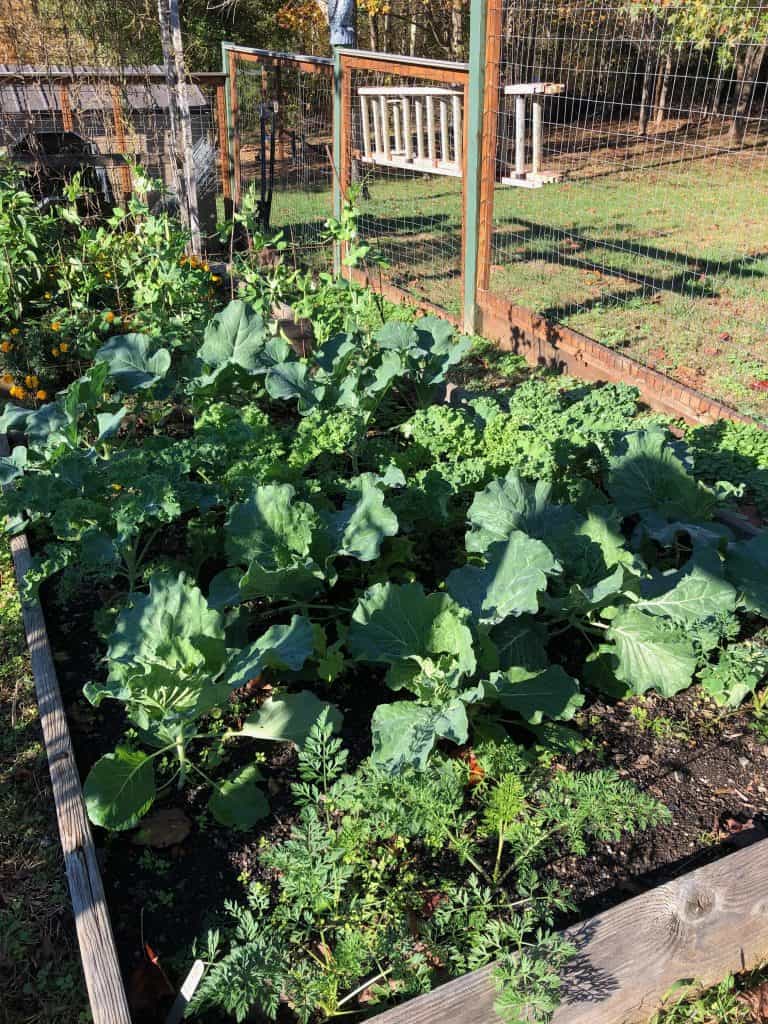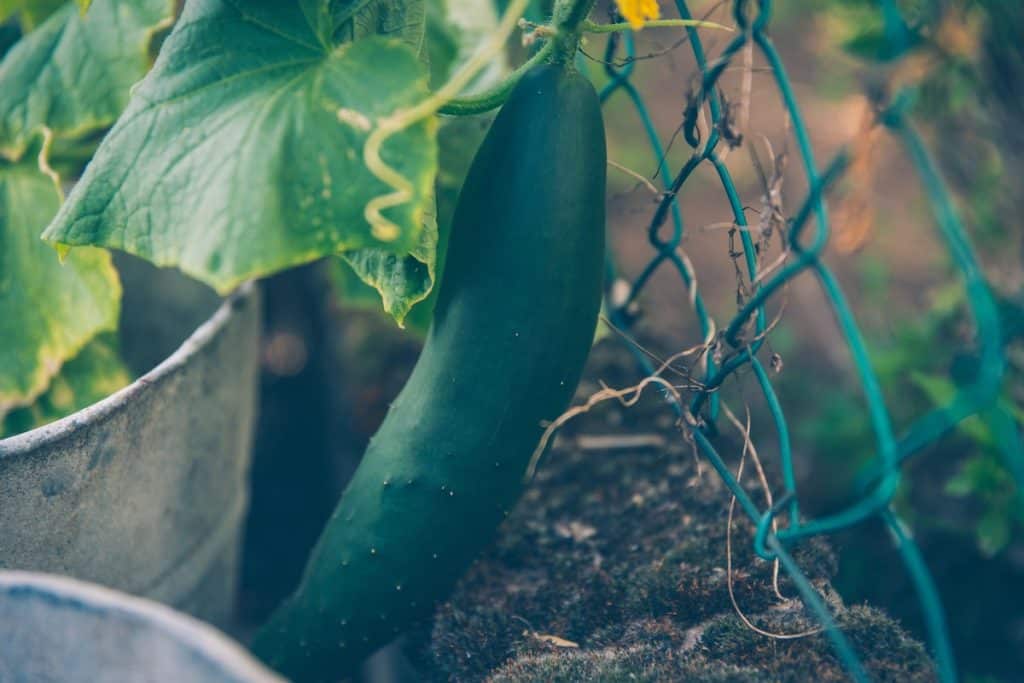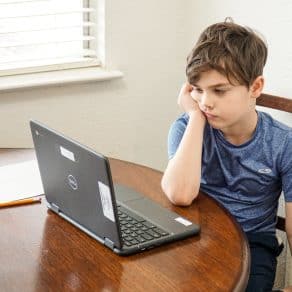I’m a homesteader at heart. It’s my dream to one day own a “farmette,” but there have always been things holding us back. We have moved several times in our marriage. We love having some land, anywhere from 1-3 acres. However, we have never managed one single time to be in on this land without an HOA. So a “farmette,” even having chickens, continues to be only a dream. The one thing I have been able to control, and you can too, is having a garden. It doesn’t matter if you have 10 acres or .10 acres. Growing your own food is a great step to better health. Read on for tips on how to garden in a small space. Farmette not required.

This site contains affiliate links to products. I may receive a commission for purchases made through these links at no extra cost to you.
The Benefits of Growing Your Own Food
Growing up, my parents always had a garden, and in addition, would buy bushels of beans to put up for the winter. It’s not surprising that shortly after I was married, the garden bug hit me too (no pun intended, ha ha). I have utilized all kinds of spaces over the years in different yards we have had. But first, let’s consider why I wanted to grow my own food in the first place.
As I mentioned in my article on which seeds are best to start outdoors in your garden, I absolutely marvel at God’s provision. You put a seed into the ground, watch it sprout, grow into a plant, produce food to eat, then can gather more seed from that very food for the next season! Amazing! The wonder of watching seeds sprout is probably not going to keep you going in your gardening journey, however!
Many people started gardening in the past few years after realizing how unstable our food system truly is. When you can walk to your backyard to cut something for dinner, empty produce shelves don’t stress you out. Not to mention you can grow exactly what and how much you know your family will eat at a fraction of the cost of grocery store offerings.
The biggest reason I have gardened for 20 years, however, is that I can control how I grow my food and what I put on it. Produce at the store that is not certified organic not only has pesticide and herbicide residue, but is grown with synthetic fertilizers. Healthy soil is a necessity for healthy plants and therefore a healthy YOU. But synthetic fertilizers decimate the natural microorganisms in the soil and only replace the “big three” nutrients- nitrogen, phosphorus and potassium. For further research, you can read this article which does a beautiful job of discussing the harms of fake fertilizers as well as pesticides.
Tips for Gardening in a Small Space
You may be blessed with tons of open space to put in a garden, or you may have a tiny plot in a neighborhood. The beauty of gardening is that you really don’t need that much space to put in some of your favorite foods. Even if you want to grow food to either can or freeze, this can be accomplished in a small space. The key is planning and focusing in on what you want to grow. Do you love tomatoes and want to can them? Crazy about green beans and want to freeze them? Understand bell peppers are on the “dirty dozen” list so want to avoid that? Hone in on your WHY. If you have a small space, you can either grow a little of a lot of vegetables or a lot of just a few. Decide which is more important to you.
Let’s examine some popular ways to garden in a small space, and how to make the most of what you have.
Container Gardening

Container gardening uses pots or planters to grow plants on a patio, deck, or balcony. I have also plunked a bunch of containers down in a sunny spot in my yard when I knew we weren’t going to be staying put long. The nice thing about using containers is that they’re moveable. Accidentally put them in a spot without enough sun? No problem- just move them around. A trick to keep containers light is to fill the bottom few inches with wood chips, shredded leaves, or even small pebbles. A decent sized container filled with good soil gets very heavy.
Another perk with using containers is that you can obtain them for cheap or even free. You can use any assortment of what you may have on hand, even old plastic tree containers. Take a look on Marketplace or check out GoodWill for some great bargains. You don’t want to use anything small unless you are doing herbs. A fairly small vegetable plant is the bell pepper (or any type of peppers actually). Squash or zucchini will grow OUT instead of UP but will still require at least a medium pot. Otherwise, the plants will grow tall and develop a deep root system. You will need larger pots for this.
Another important factor to consider with container gardening is the growing medium you use for the container. Choosing an organic potting mix is fine, but you will want to add some extra nutrients. Because plants in containers aren’t connected to the earth, you need to make sure you’re supplying them ALL the nutrition they need. As mentioned above, don’t run to the store for Miracle Grow! If you are just starting, you can purchase Black Kow manure and compost in bags. Better yet is to find some mushroom compost in your area. Once you gain some confidence in your gardening, you can start your own compost pile, or simply add things like used ground coffee, crushed eggshells, or fish tank water if available.
Vertical Gardening

Vertical gardening is my go-to even with plants that are normally run along the ground. You can use this method whether you do an in-ground garden, a raised bed, or even a container. Vegetables that love to climb are cucumbers, pole beans (green beans that are not bush variety), and any type of pea. There are others that love to climb but not conducive to growing vertically because the fruit is too heavy. These include any of your melons or winter squash. Tomato plants and pepper plants don’t climb but still need support to stay vertical. You can use a cage or tie them up onto a secure stake.
Another fun idea if you have a chain link fence in your yard is to amend the soil all along the fence and use that as your trellis. It’s free and already in the ground! All you need to “help” the plants to go UP instead of sprawl and take up room is anything to tie the plant to the fence (or trellis). I have used twine, yarn, and even twist ties. You can purchase reusable velcro plant ties which are nice because they can be cut to the length you need and can be used multiple times before the velcro gets weak.
Raised Beds
I’ll be honest- I did an in-ground garden my first 3-5 years gardening but since then have only used raised beds. You need 6-12 inches of good soil, whatever plants you choose. That is a LOT of digging and amending when you’re digging straight into the ground. I also wasn’t great with building up the rows while leaving good walkways. Raised beds are the only way to go in my mind.
It helps I have a handy husband, but honestly it doesn’t take much skill to build the boxes. You can design them any size you want. I’ve had three twelve foot long beds which is a TON of space to grow all kinds of vegetables! Most important when designing a raised bed is not to go wider than four feet. Three feet is better. When you have a bumper crop of tomatoes and you can’t reach the center of your bed you’ll thank me for this advice. Allow at least four feet between your beds for walkways. Summer veggies get large and unruly and when you’re going through a forest of plants, it takes the fun out quickly!
As with container gardening, you have to be mindful of the soil you choose because you won’t have the plant’s roots getting down into the soil of the earth. Filling your raised beds is an initial expense but doesn’t cost much once they’re in each season. To save money, we have gotten truck loads of plain topsoil to be on the bottom then added more of the good stuff to mix in for the top 6 inches or so. You should have a local nursery that carries some type of compost, and it’s always cheaper to purchase buy the truckload than getting bags. This article on Lowe’s website gives a great overview of soil testing, soil types, and things to amend with.
A major space saver that is perfect for raised beds is square foot gardening. You can pack in a bunch of plants into a smaller space. This is also called intensive gardening, and basically just places plants more tightly together. You not only fit in more plants, but help smother any weeds that want to grow because the plants block out the sun.
Urban Farming

This type of garden may not apply to many of my readers, but the idea is that gardening can truly happen just about anywhere if you put forth effort! This type of gardening uses any available space like rooftop, balcony, windowsill or porch to grow plants. As long as the space gets 6 hours of sun, grow you some veggies! The same rules apply with the quality of your soil as mentioned with container gardening. Take care to water daily.
I hope this article has inspired you to have a bit of a green thumb. Don’t be afraid of gardening- it’s truly not hard. Your plants need good soil, enough sun, and water. Provide those things and you’re well on your way to being a gardener!

